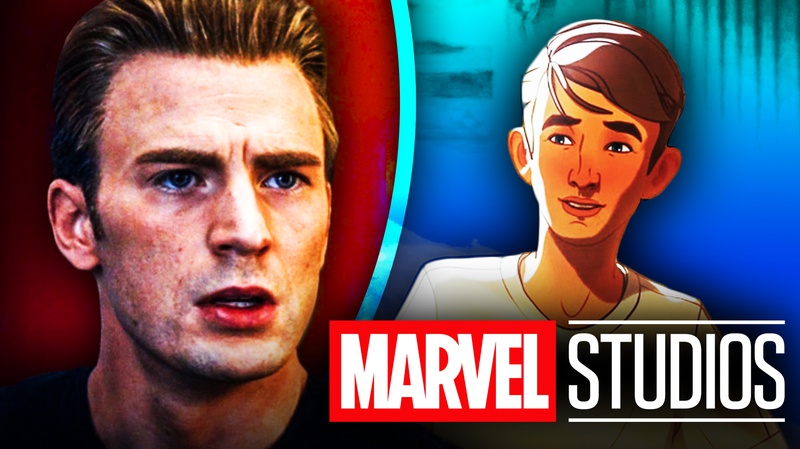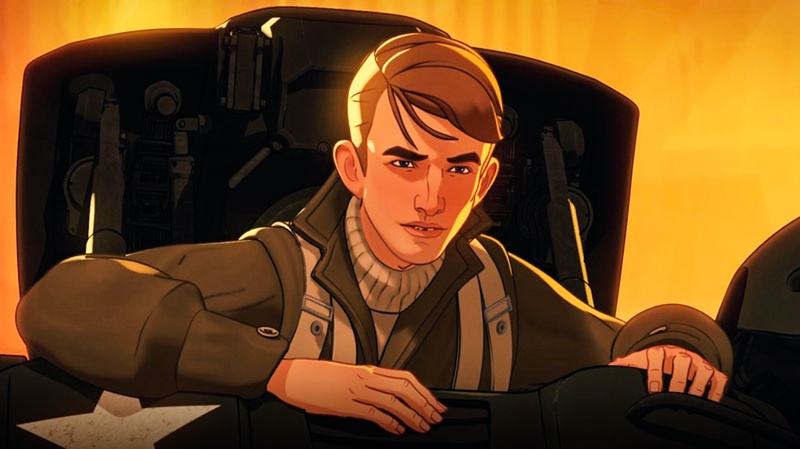Chris Evans' MCU Voice Replacement Actor Reveals How Marvel Prepared Him for What If (Exclusive)

What If...? has begun releasing episodes every Wednesday on Disney+ and is delivering some alternate scenarios for the MCU on the premise of one change in the timeline affecting everything after it. While part of the draw for the newest Marvel Studios series is the fact that the vast majority of MCU actors are voicing their animated counterparts; though, a few are not doing so and have been replaced with some impressive soundalikes.
One such replacement is Josh Keaton, a veteran voice actor who filled in for Chris Evans as Steve Rogers for the project. The Direct was recently able to sit down for a chat with Keaton, in which he shared how he prepared to take on the role and how voice acting can be a deceptively complex manner of performance.
HOW JOSH KEATON FILLED THE MCU SHOES LEFT BY CHRIS EVANS

The series premiere of What If...? heavily paralleled the storyline of Captain America: The First Avenger and voice actor Josh Keaton revealed he "definitely [referenced] those scenes" when preparing to voice Steve Rogers in the series.
“I basically went through all the movies that I had and just pulled the audio from all the stuff that he was saying. And so yeah, I definitely did reference those scenes, especially the ones that were going to be paralleled, because as you know from watching the episode, not everything has an exact parallel in the movie. So for [the stuff that there was no direct parallel for], it was me doing my interpretation of how I assumed he would’ve played it. The stuff that there was a direct parallel for, I wanted to try to keep it as authentic as I could, so I absolutely referenced the scenes that they were trying to parallel.”
He also shared that the series was different from some of his other voice roles as it "wasn't a dub" (meaning a re-recording of a show or movie in a different language than the one in which it was originally presented), noting that because of this it was important to "ask the director as many questions as [he could]" in order to fully flesh-out his portrayal.
“This wasn’t a dub, so I didn’t even have, like, the animation to look at. I didn’t even have a character model to look at, like, nothing. It was basically me [at] one of the Disney sound stages with the director, Bryan [Andrews] sitting there in front of me, a microphone, and a music stand with the dialogue. And that’s it. So, at that point it’s up to you to ask the director as many questions as you can to try to help inform you of what’s going on in the scene. How close are they to each other? Are they trying to be secretive here? Is there battle noise here? Is he winded from just having finished a fight? You need to ask those questions so that you can kind of fill in your imagination, because you have to imagine all those things so that you can play it appropriately.”
JOSH KEATON'S DECEPTIVE CHALLENGES OF VOICE ACTING

While Keaton has done many voiceover roles, he originally "came from on-camera acting", explaining the comparative challenges of voice work.
“Voice acting is definitely difficult. Like, it’s not just reading lines [...] you have to inform all of that context with just your voice. I came from on-camera acting, that’s actually how I got into the business, and when you’re acting on camera you have the other person to play off of. You have their reactions to react to, you have wardrobe, you have props, you have a set, you have lighting. You have all of these other things that help inform your performance, you have your expressions and your movement. You don’t have any of that when you’re doing voiceover.”
Keaton further described his methods of ensuring that his vocal performances sound as authentic to the given situation as possible, such as "taking the position of how [his character] would be standing" and "[having] to tighten certain muscles to contort yourself as if you're getting hit."
“You have to basically, in your mind, create that whole movie and then with your voice play it as if you were physically there. So when I’m there, I’m not just standing there reading, I’m acting it out; I’m taking the position of how I think he would be standing [but] obviously you have to adjust some things because you can’t be looking off mic [...] [but] if you’re doing fight noises or things like that you really have to move your body, and you really have to tighten certain muscles and contort yourself as if you’re getting hit or whatever. But again, you have to kind of modify it in a way so that they can’t hear your clothes moving or your body moving, and it’s just the voice coming out. So there’s definitely a lot of technique to it; I know that a lot of people who don’t have experience with it think its just reading lines, and it’s really not. It definitely is its own beast.”
The Direct would like to thank Josh Keaton for chatting, and the first portion of our interview with the What If...? star can be found here.

No comments: